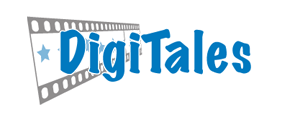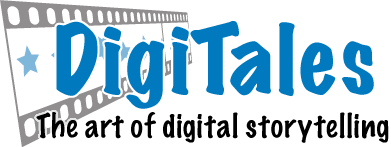This is a general overview for crafting your story into a 3-5 minute digital movie. The process of making a digital story can be organized into four separate phases. Anyone who has learned the stages of writing will feel comfortable with working in these progressive and sometimes overlapping phases. May the seven steps outlined within the phases help guide you in translating your imagination and talents into a story you will be proud to tell. After all the guidelines, steps and rules-of-thumb, the most important element of a successful digital story is to have fun!
Writing a Script
A digital storytelling script is a first person narrative that tells the story in your own voice and style. The written script will be made into a digitized voiceover during production. The voiceover is the heart and soul of each personal digital story. Before writing the script, you will want to find your story. One of the most unique features of this specific digital storytelling style is the expectation that each story express a personal meaning or insight. Periodically try reading or telling your story out loud. Listen to the writing style. Does it represent the way you speak? Revise the sentence structure and vocabulary choices until the story has a conversational style that you might use with friends, family and colleagues. Then give thanks for our word processing tools that make revising the story into a final copy a doable task!
Planning the Project
The complexity of weaving all the media elements together into a cohesive story gives new meaning to planning FIRST! Digital storytellers will find it well worth the up front time to use three planning tools to prepare for post-production: paper/electronic storyboarding templates; image/shot lists templates; and music/sound lists templates. Storyboards provide the “BIG” visual blueprint of all the detailed choices you make for each scene or image frame for your digital story before you begin production. Think of your storyboard as a work in progress that is modified as often as needed while keeping track of both the details and “big” picture of your story. The image/shot lists along with music/sound lists help identify exactly what resources you need according to the storyboard.
Organizing Project Folders
Each digital story is considered a project. Keep all six sub-folders of resources and assets organized together within the final project folder. It is essential that these files all stay together! If these files are stored randomly or separately from the production file, then you may find yourself having to hunt down the location of each moved file and reconnect or “re-reference” it for the software program.
Making the Voiceover
Voiceovers are the digital files created by recording your final script in your own voice. Your voice performs the story rather than reading it. Voices engage the audience in the personal content and emotional meaning of the story. A storytelling voice establishes a personal relationship with listeners as the story unfolds. But your voice with all its power and flaws expresses the real magic in your story because the story is told in a way that no other than you can deliver.
Gathering and Preparing Resources
Now it is time to be guided by the storyboard planning. Use the image/shot lists along with the music/sound lists gather and prepare all media prior to the post-production stage. The completed digitized voiceover organizes the final selection of all resources needed to extend the emotional power, depth and meaning of your story. This is a very different approach than narrating whatever images were gathered. Every story’s media resources will be different based on the script and creative interpretation of their story. The technical tools and skills needed to complete this task provide a great playground for learning and making your story unique.
Putting it ALL Together
You are now ready to spin your tale with video-editing tools. This is the post-production stage where all the elements are mixed together following the storyboarding developed in the pre-production phase. Your ultimate goal is to draw viewers into the story and keep them there as it unfolds. A rough cut with the images and voiceover ONLY is created first. When that is roughly flowing, the other media elements are then mixed for a final cut. Each media element is used to extend the story’s meaning and impact. Music soundtracks are added last. So many choices! So many creative styles! It is great play space! Beware the danger of eternal dabbling, polishing or modifying, thus creating a never-ending, never quite ever, ever finished story project! Depending on project deadlines, storytellers may again want to consider keeping it simple the first time or two. Take time to cite your sources with “rolling credits” at the story’s end as well as adding any acknowledgements you want to make.
Applause! Applause!
What joy to finish a digital story! There is much to celebrate. When we share our stories, we experience a sacred time, a ritual that closes the story experience for individuals as well as groups who have been creating together. We are finally officiallyStoryKeepers! There are many ways to distribute. Exporting to email or creating story files suitable for web publishing is one great way to share with others. Exporting stories to DVD format is another popular way to distribute. You can even port your movie to Bluetooth enabled cell phones to impress any and all friends or strangers.
And now the digital story lives happily ever after . . . literally a living artifact that each storyteller now leaves as a personal legacy to others.

